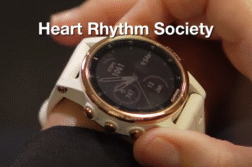WASHINGTON, D.C. (Ivanhoe Newswire) – There are nearly one million heart-related deaths each year – evenly split between men and women – but cardiac warning signs vary widely. Large artery blockages are usually spotted quickly, but not those in small heart vessels. Women are much more likely to experience small vessel disease, called coronary microvascular dysfunction, and be misdiagnosed.
Celina Gorre is the CEO of WomenHeart.org and, ironically, is a heart patient, herself. When neck fullness and fatigue hit hard, she headed straight to the hospital nearly a dozen times, only to be sent home undiagnosed.
“The conclusion of those ER docs was that I was having a particularly hard day,” Celina recalls.
Studies show gender makes a difference in testing and treatment. Because coronary microvascular dysfunction occurs almost exclusively in women, if they’re tested only for large artery disease, then CMD remains undiagnosed – but it’s an easy test.
Interventional cardiologist at MedStar Washington Hospital Center, Hayder Hashim, MD explains, “So, it’s very simple. It’s an additional five to seven minutes extra on top of a regular diagnostic cardiac catheterization.”
Testing for CMD is often not routine because it hasn’t been an official diagnosis. Dr. Hashim recently testified before the Centers for Disease Control in an effort to change that, and he was successful.
“The CDC approved it as a diagnosis, as of October first 2023, that this disease of the micro circulation of the capillaries, is now a recognized diagnosis,” Dr. Hashim says.
And that is good news for both Celina, as well as the 65 percent of heart patients with CMD who otherwise would go undiagnosed and untreated.
Dr. Hashim and his MedStar colleagues are compiling a registry of coronary microvascular patient symptoms and diagnoses that will soon become a national database to provide more information for clinicians and researchers on coronary microvascular dysfunction.
Contributors to this news report include: Donna Parker, Producer; Kirk Manson, Videographer; Sharon Dennis, Editor.
To receive a free weekly e-mail on medical breakthroughs from Ivanhoe, sign up at: http://www.ivanhoe.com/ftk
Sources:
https://my.clevelandclinic.org/health/diseases/21052-microvascular-coronary-disease
https://professional.heart.org/en/science-news/heart-disease-and-stroke-statistics-2023-update
https://www.health.harvard.edu/heart-health/the-heart-disease-gender-gap
https://give.brighamandwomens.org/7-differences-between-men-and-women/
https://www.mayoclinic.org/diseases-conditions/small-vessel-disease/diagnosis-treatment/drc-20352123
https://www.drought.gov/about/partners/centers-disease-control-and-prevention-cdc
https://www.jacc.org/doi/full/10.1016/j.jcmg.2014.12.008
MEDICAL BREAKTHROUGHS
RESEARCH SUMMARY
TOPIC: CMD: THE HEART CONDITION DOCTORS MOST OFTEN MISS IN WOMEN
REPORT: MB #5336
BACKGROUND: Coronary microvascular dysfunction, or CMD, refers to abnormalities or dysfunction in the small blood vessels (micro vessels) of the cardiovascular system. These micro vessels, including arterioles, capillaries, and venules, play a crucial role in regulating blood flow and nutrient delivery to tissues, including the heart muscle. When dysfunction occurs in these micro vessels, it can contribute to various cardiovascular conditions. CMD is 66 percent prevalent in women and 60 percent prevalent in men.
https://www.ccjm.org/content/88/10/561)
DIAGNOSING: Symptoms of CMD can vary, but the most prevalent symptoms are chest pain, shortness of breath, and/or fatigue. Doctors can diagnose CMD with a cardiac catheterization, which includes a small wire going through the groin to check the index of microcirculatory resistance, or IMR. CMD can be caused by endothelial dysfunction, infiltrative cardiac disease, early atherosclerosis, smoking, obesity, high stress, or high blood pressure.
NEW TECHNOLOGY: CMD treatment is still in the works. Right now, “testing for CMD is often not routine because it hasn’t been an official diagnosis. Interventional cardiologist at Medstar Washington Hospital, Hayder Hashim, MD recently testified before the Centers for Disease Control in an effort to change that. He was successful. Dr. Hashim and his MedStar colleagues are compiling a registry of coronary microvascular patient symptoms and diagnoses, that will soon become a national database to provide more information for clinicians and researchers on coronary microvascular dysfunction.”
(Source: Hayder Hashim, Interventional Cardiologist at Medstar Washington Hospital)
FOR MORE INFORMATION ON THIS REPORT, PLEASE CONTACT:
So Young Pak
If this story or any other Ivanhoe story has impacted your life or prompted you or someone you know to seek or change treatments, please let us know by contacting Marjorie Bekaert Thomas at mthomas@ivanhoe.com



